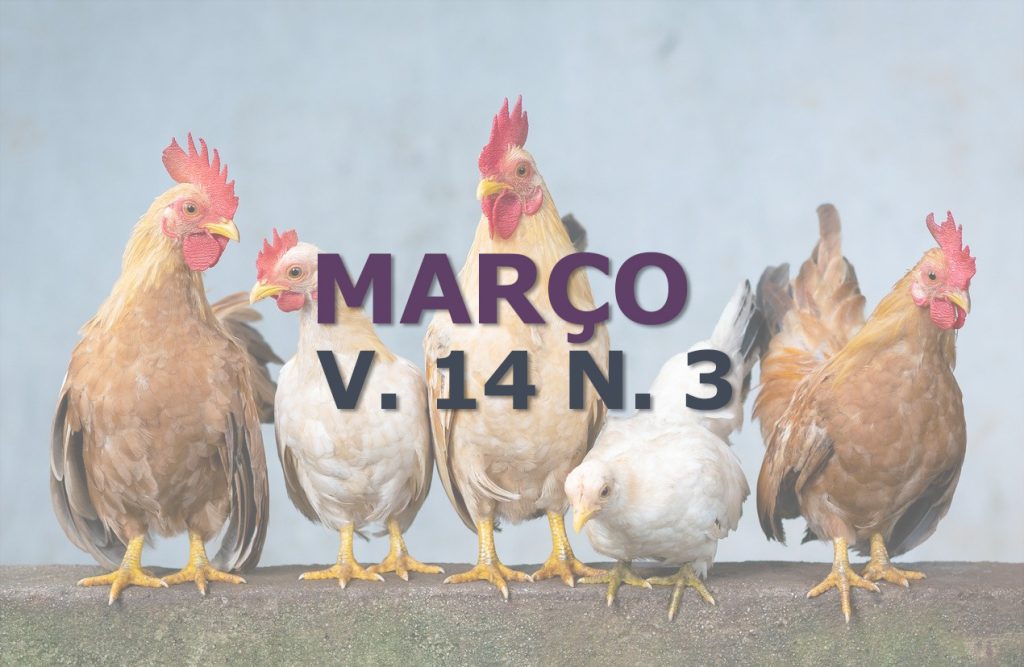Inclusion of whey in the diet of pre-weaning and nursery piglets
DOI:
https://doi.org/10.31533/pubvet.v14n3a521.1-6Keywords:
performance, evaluation, consumption, treatmentsAbstract
The objective of the experiment was to evaluate the performance and economic evaluation of the use of whey in the piglet diet during nursery. The study took place in the swine sector of the Federal Institute of Bahia-Campus Santa Inês using 16 Large White piglets. It was divided into two phases, the first in the maternity with two treatments in the period pre-weaning. In this period was offered whey with feed (ration) a proportion of 50/50 for one litter (T1) and for the other treatment only natural breastfeeding (T2), without whey with duration of one week before weaning. In the second phase, experimental phase, the piglets were housed and distributed in four treatments in the nursery following the randomized block design (DBC) method, through four treatments with two repetitions each. The first phase T1 litter was distributed in four stalls where the whey was offered with 30% whey and 70% ration feed forming two repetitions with whey (ST1R1 and ST1R2) and two only with feed (RT1R1 and RT1R2). The first phase T2 litter was also distributed in four stalls with the same methodology followed for T1, with two repetitions adding 30% whey in the diet (ST2R1 and ST2R2) and two only with feed (RT2R1 and RT2R2). The data obtained were submitted to analysis of variance and 4x2 interactions, with significant differences between the means compared by Tukey test at 5% probability. According to the statistical analysis, there was a difference (P <0.05) between treatments for the parameters of mean weight gain (GPM) and feed conversion (CA), numerically the best results for these parameters were for piglets fed only with feed, whereas for feed intake (CR) no difference (P> 0.05) was observed between treatments. The economic evaluation proved to be viable, that is, despite not maximizing the performance results, the inclusion of 30% whey in the nursery phase piglet diet can be a great alternative to save on feed cost and give an appropriate disposal option for this by-product to dairy products.
Downloads
Published
Issue
Section
License
Copyright (c) 2020 Emanuel de Souza Oliveira, Allan Cerqueira de Oliveira, Roberto Sobral Félix, Daniel Pereira Franklin Neto, Ronaldo Santos de Jesus, Guilherme Rodrigues de Nascimento

This work is licensed under a Creative Commons Attribution 4.0 International License.
Você tem o direito de:
Compartilhar — copiar e redistribuir o material em qualquer suporte ou formato
Adaptar — remixar, transformar, e criar a partir do material para qualquer fim, mesmo que comercial.
O licenciante não pode revogar estes direitos desde que você respeite os termos da licença. De acordo com os termos seguintes:
Atribuição
— Você deve dar o crédito apropriado, prover um link para a licença e indicar se mudanças foram feitas. Você deve fazê-lo em qualquer circunstância razoável, mas de nenhuma maneira que sugira que o licenciante apoia você ou o seu uso. Sem restrições adicionais
— Você não pode aplicar termos jurídicos ou medidas de caráter tecnológico que restrinjam legalmente outros de fazerem algo que a licença permita.





